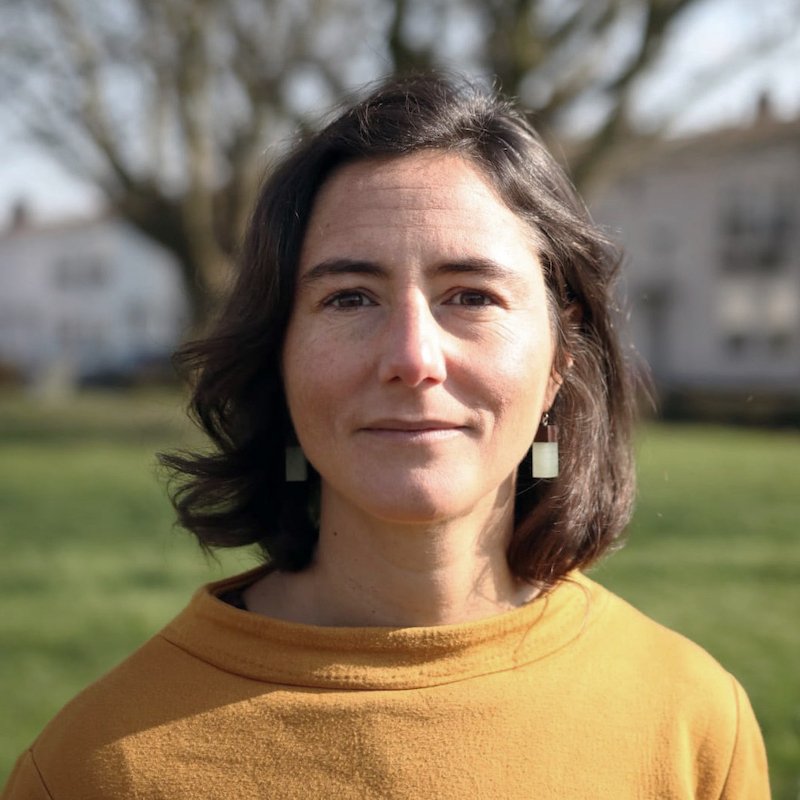Irene Maldini
Our thirteenth member of the month is sustainability researcher Irene Maldini.
UCRF is running a ‘Member of the Month’ feature on this blog, where a member, selected at random from the membership database, is sent five questions to give us all an overview of our members. Our thirteenth participant is sustainability researcher Irene Maldini.
– How would you sum up your research / practice?
For context: After years designing products such as household appliances and kitchen accessories in South America (Uruguay and Brazil) and driven by the critical questions that were growing in my head and my teaching, I quitted design practice in 2010. I decided that promoting critical research in design for sustainability would be the best contribution and moved to the Netherlands for a deep dive.
Thirteen years later and now based in Lisbon, I do exactly that. I conduct field research showing that popular approaches to reduce the impact of consumer goods (mainly clothing) do not have the expected effect. I have investigated the environmental impact of design and policy strategies such as digital (self) fabrication, personalization, and durability to conclude that as long as these are technology and market driven in a capitalist context, no significant change can take place. See my publications.
– How do you address fashion and sustainability in your work?
The focus of my work is on production volumes and consumerism, not only as an individual but as a systemic phenomenon, that is how I have become particularly interested in clothing. I believe that our field has evolved so rapidly in recent years, in connection with the visibility of fashion as an unfair and polluting sector, that the fashion debate is taking a leading role in the social and economic changes that are needed to realign human activity to the limits of the planet. Despite the short trajectory of sustainable fashion as a field of studies, we have already arrived at a point of maturity in this debate where we can contribute to other fields and to much needed transformations. Exciting times!
– What are the conflicts you have encountered around fashion and sustainability in your work?
One of the main challenges I face in my everyday work is the industrial understanding of sustainable fashion. Making and selling better products doesn’t interest me. But this is what a lot of people understands when one refers to fashion and sustainability. For them, it is hard to be open to other ways of considering it, even in a university context.
– What do you consider the key sources and cases when it comes to fashion and sustainability?
I am interested in economic perspectives about the limits of growth. The sources are well known for the Union community: Tim Jackson’s Prosperity without Growth, Kate Raworth’s Doughnut Economics, and others. Then, about clothing specifically, I would say that “key sources” are published every month. Being able to follow and embed my work in the context of this productive research community is exciting and challenging.
– Could you recommend some less known sources or cases you think should be more widely shared?
Maybe historical views of design for sustainability. This is something that not everyone is familiar with, especially younger researchers and practitioners. It helps to put our current ideas about sustainability in context, considering them from certain distance, and self-reflecting on our own position as designers/researchers/activists. Here is a short list:
Fallan, K., & Jørgensen, F. A. (2017). Environmental histories of design: Towards a new research agenda. Journal of Design History, 30(2), 103–121. https://doi.org/10.1093/jdh/epx017
Keitsch, M. (2012). Sustainable Design: A Brief Appraisal of its Main Concepts. Sustainable Development, 20(3), 180–188. https://doi.org/10.1002/sd.1534
Knight, A. (2009). Hidden Histories: the story of sustainable design. Discovery Guides, (June), 1–17.
Madge, P. (1993). Design, Ecology, Technology: A Historiographical Review. Journal of Design History, 6(3), 149–166. https://doi.org/10.2307/1316005
Madge, P. (1997). Ecological Design: A New Critique. Design Issues, 13(2), 44–54.
Thank you for sharing your work, Irene!

